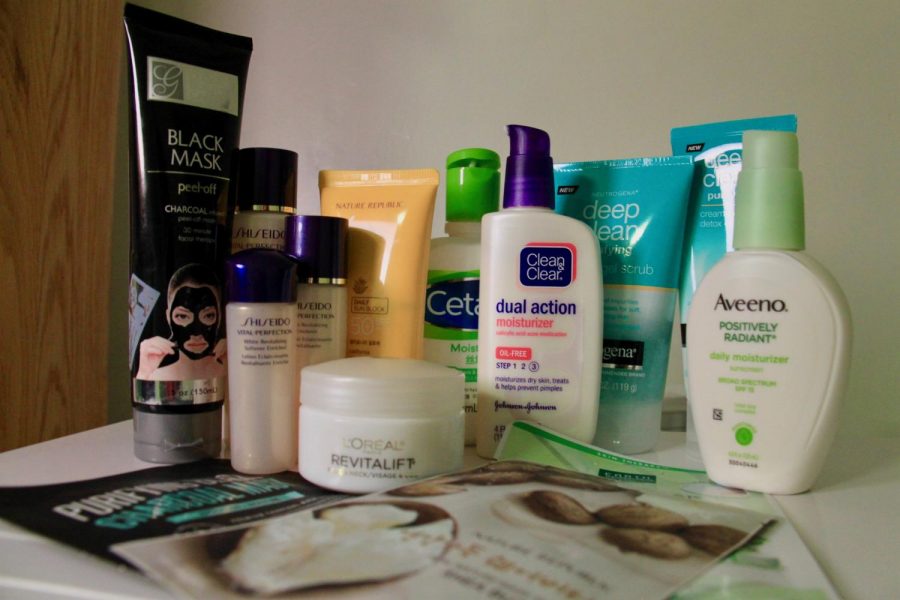Skincare. It’s one of the biggest crazes as of late; and there is no better time than college to build a skincare routine to both repair existing issues and prevent future complications. But if you don’t know where to start, don’t worry. A simple and purposeful routine customized to your skin type is the easiest way to approach skincare.
Step 1: Cleanse
The first step to caring for your skin is getting the gunk out. If your skin is dry and sensitive, a cream or oil-based cleanser may be your best bet, especially in the thick of winter. If flaky or dry skin is withholding you from washing twice a day, opting for a cleansing milk, a gentle cleanser made from an emulsion of fats and water, will keep your face soft as a baby’s bottom. For oily or combination skin, a gel or foaming cleanser will freshen and mattify. Cleansers with salicylic acid or charcoal are uniquely detoxifying. For particularly acne-prone skin, an exfoliating scrub used on alternating days can make a world of difference in cleaning out your pores. If you wear makeup, ditch the makeup wipe and choose a micellar water that will leave your skin clean without drying it out.
Step 2: Tone
The idea of using a toner may seem frivolous at this age, but it is an optimal product to balance the pH of your skin, which can often be compromised in the process of cleansing. Taking this step immediately after cleansing allows you to take advantage of the moisture and lock it in. Being wary of the ingredients in your toner can help you target specific skin issues. For a hydrating toner, look for one with ingredients such as glycolipids, peptides or seed oils. For a toner with soothing properties, search for one with chamomile or rosehip, as they have anti-inflammatory effects and promote skin elasticity, respectively. Avoid alcohol or menthol, as they are often irritating, even for oilier skin types.
Step 3: Serum
If you have no idea what a serum accomplishes, trust me, you are not alone. Serums can tackle anything from dark spots to wrinkles (it is never too early!) to dullness. Treatment may seem optional, but a couple of drops goes a long way. Another common issue is dry skin, which can benefit from a serum with vitamin E or hyaluronic acid which seals in moisture and protects skin from oxidation. For more radiant skin, green tea extract and ferulic acid can even skin tone and add glow. To combat acne, serums with vitamin C or retinol are soothing and repairing.
Step 4: Moisturize
This step seems intuitive, but finding the right one for your skin type can make or break your routine. If you know your skin to gradually become oily throughout the day, a lightweight, water-based gel moisturizer is ideal. But a thicker cream can keep your skin moist throughout the day, or serve as a richer alternative for nighttime. If your skin feels smooth but not greasy after application, you’ll know that you’ve found the moisturizer that works best for you.
Step 5: Sunscreen
Buying a sunscreen solely for your face and using it on a daily basis is by far the most undervalued step in a skincare routine. Whether or not the sun is out that day, sunscreen is non-negotiable. Though it may seem too soon to worry about wrinkles, sun spots or loose skin, trust that just a nickel-sized amount should not be overlooked. Try to find a sunscreen that is broad-spectrum so that it protects from UVA and UVB rays, and has an SPF above 30.
A strong skincare kit does not need to break the bank. In fact, sometimes the products with the simplest ingredients will make the biggest difference. Removing your makeup may just be the last thing you want to do after a night out, but having a straightforward routine to fall back on will make it simple.
A version of this article appears in the Monday, Jan. 27 2020, print edition. Email Divya Nelakonda at [email protected]























































































































































